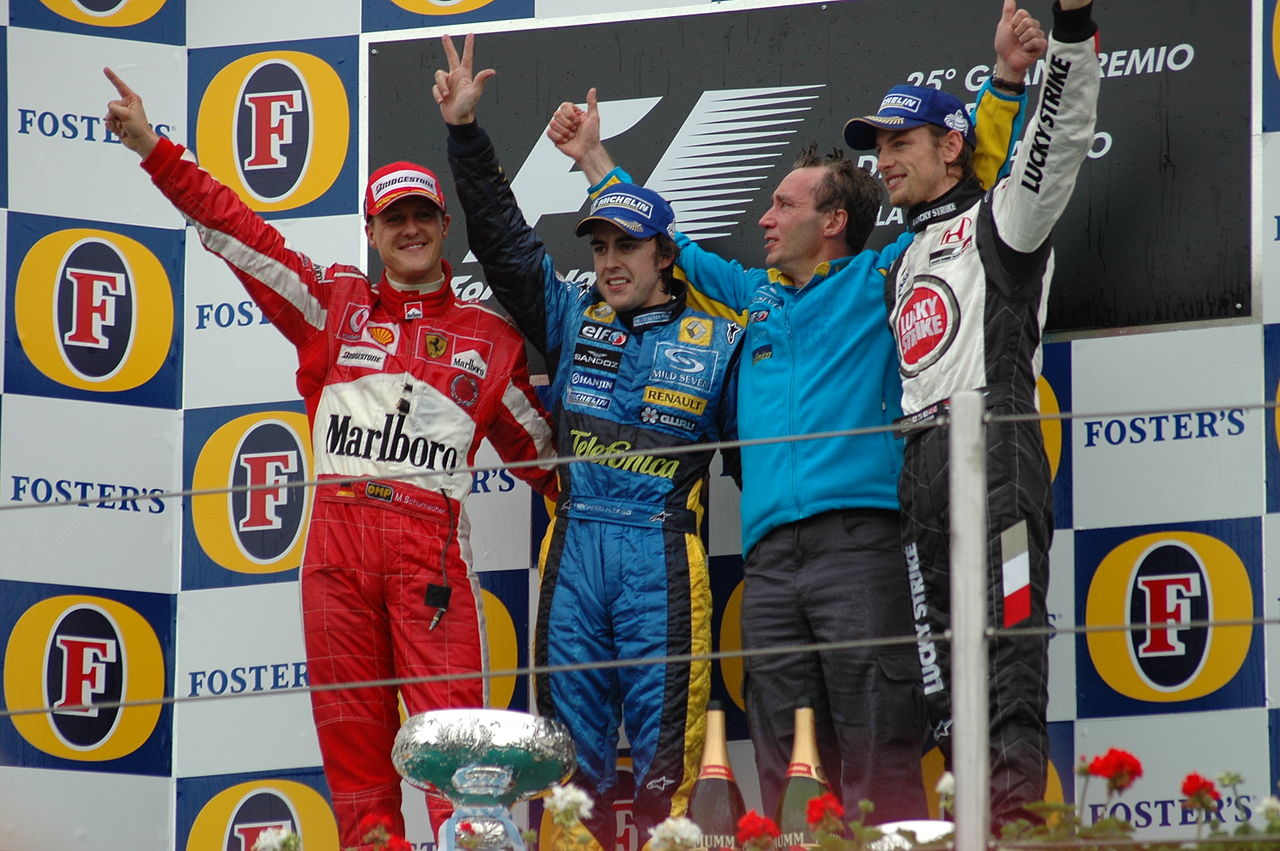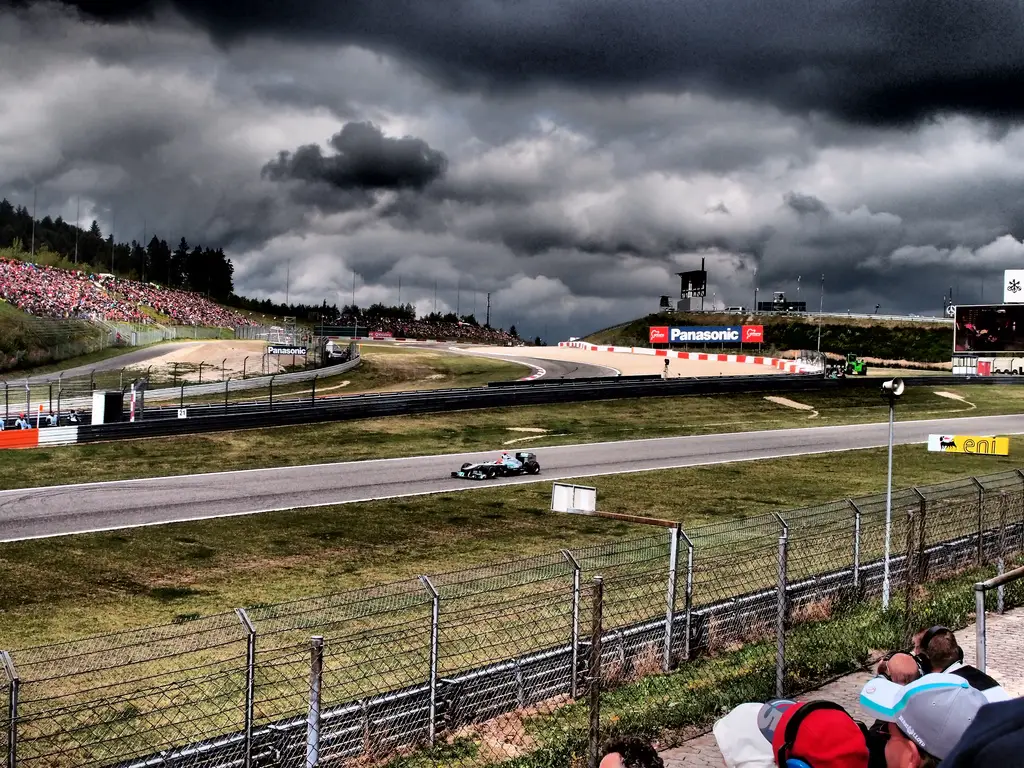In 2020, the Nurburgring became the first circuit to have hosted Formula 1 events with four different event names. Here are the circuits which have held F1 races with different titles!
Imola
Imola was the first circuit to host World Championship Grands Prix with different titles. In 1980, the circuit replaced Monza as the host of the Italian Grand Prix. The one-off affair was due to refurbishment work at Monza, though it had been expected that Monza and Imola would alternate as host of the Italian Grand Prix in the following years.
However, the 1980 Italian Grand Prix was such a success that Imola gained a permanent slot on the calendar hosting the new ‘San Marino’ Grand Prix, despite the circuit being around 100km away from the microstate.

Imola remained as the host of the San Marino Grand Prix until 2006, when the event was removed from the calendar. As a result of the coronavirus pandemic, Imola will made what was expected to be a one-off return to the Formula 1 schedule in 2020, hosting the newly-titled Emilia Romagna Grand Prix and become one of only two circuits to have hosted events with three different titles.
The Emilia Romagna Grand Prix has remained on the calendar since 2020 and Imola now holds a contract to continue hosting Formula 1 until at least 2025.
Dijon
Dijon first hosted the French Grand Prix in 1974. It returned to the calendar in 1977 as the host of the event once again and then hosted the French race on a biennial basis in 1979 and 1981. However, in 1975, the circuit had staged a non-championship Swiss Grand Prix. Motor racing had been banned in Switzerland since the Le Mans disaster in 1955, but the Swiss Automobile Club were keen to revive the event, even if it could not be held in Switzerland.
In 1982, the circuit held the Swiss Grand Prix once more, and this time it was a World Championship race, won by that year’s World Champion Keke Rosberg. The Swiss Grand Prix would not be run again, but Dijon hosted one last French Grand Prix, in 1984.
Brands Hatch
In 1964, Brands Hatch began alternating with Silverstone as host of the British Grand Prix. This continued through to 1987. However, in 1983, a proposed race in New York City was dropped from the calendar with only three months’ notice. Keen to fill the slot vacated by the New York race, Brands Hatch stepped in to host the 1983 European Grand Prix.
It was the first staging of a European Grand Prix in World Championship history, though some previous events had been given the name as an honorific title. The European Grand Prix was held once more at Brands Hatch in 1985, and the circuit would host its final F1 race – the 1986 British Grand Prix – one year later.
Nurburgring
Due to its ongoing alternation agreement as host of the British Grand Prix with Silverstone, Brands Hatch was unable to host the European Grand Prix in 1984. Instead the European Grand Prix was run at the Nurburgring – the circuit which had previously hosted the German Grand Prix until 1976. When F1 returned to the Nurburgring in 1984, it did so on the new shortened layout of the circuit, with the 14km Nordschleife consigned to the history books.
However, the German Grand Prix and the European Grand Prix are not the only titles which have been given to Formula 1 races held at the Nurburgring. In 1997 and 1998, the Nurburgring race was titled the Luxembourg Grand Prix. The circuit is located around 90km north east of the Luxembourg border, but was given the title due to the European Grand Prix title already being in use by the race at Jerez; a result of the cancellation of the 1997 Portuguese Grand Prix.
In 2020, the Nurburgring returned to the F1 calendar for the first time since hosting the 2013 German Grand Prix. With the 2020 race titled the Eifel Grand Prix, the circuit became the first to have hosted Formula 1 races with four different event titles. Its latest name was a nod to the nearby mountain range.
Jerez
The newly-opened Circuito de Jerez joined the Formula 1 calendar in 1986 as host of the Spanish Grand Prix, marking the event’s return to the calendar after a five year absence. The circuit remained as host of the Spanish race until 1991, when it was replaced by the Circuit de Barcelona-Catalunya.
However, this was not the end of the circuit’s tenure on the calendar. Jerez re-joined the schedule in 1994 due to the postponement of the Argentine Grand Prix. Jerez hosted the 1994 European Grand Prix, and would host the event again in 1997 – the latter race being memorable for the title decider between Jacques Villeneuve and Michael Schumacher.
The track was temporarily banned from hosting F1 races due to an incident on the podium at the 1997 European Grand Prix. Though it has not hosted a race since, it has been used as a testing venue.
Indianapolis
Though not technically a Formula 1 race, the Indianapolis 500 was part of the World Championship between 1950 and 1960. F1 made its debut at the circuit forty years later, with the road layout of the Indianapolis circuit hosting the return of the United States Grand Prix in 2000 after a nine year absence from the calendar. Indianapolis remained on the calendar until 2006.
Baku City Circuit
Baku City Circuit joined the Formula 1 calendar in 2016. On its first appearance on the schedule, Baku hosted the 2016 European Grand Prix. It became the sixth circuit to have hosted the European Grand Prix in Formula 1, and the first track to do so since Valencia Street Circuit in 2012. For the second race in Baku, the event was renamed the Azerbaijan Grand Prix, which it has been titled ever since.
Red Bull Ring
In 2020, owing to calendar changes brought about by the coronavirus pandemic, the Red Bull Ring became the first circuit to stage two Formula 1 races in a single season. It did so on consecutive weekends, with the season-opening Austrian Grand Prix being followed one week later by the Styrian Grand Prix.
The track hosted two races once again in 2021, with the Austrian Grand Prix following one week after the Styrian Grand Prix. Both races were won by Max Verstappen.
Silverstone
Silverstone has played host to the British Grand Prix on over 50 occasions. The circuit was host to the very first round of the World Championship in 1950. That race was also given the title of the European Grand Prix; an honorific title which was given to certain races until 1977.
However, it was not until 2020 that Silverstone hosted a Grand Prix that was not titled the British Grand Prix. With two races held on consecutive weekends at Silverstone as a result of the coronavirus pandemic, the second race was titled the 70th Anniversary Grand Prix; a nod to the 70th anniversary of the first World Championship race at the track in 1950. It remains the only Formula 1 race which was not named after a geographic location.
Bahrain International Circuit
At the penultimate race of the 2020 season, the Bahrain International Circuit became the ninth circuit to have hosted F1 races with different event titles. The Bahrain Grand Prix has been held at the circuit in almost every season since 2004.
While the Bahrain Grand Prix was held once again in 2020 – in which Romain Grosjean suffered a fiery crash – it was followed one week later by the Sakhir Grand Prix. In a Formula 1 first, the drivers raced on different layouts of the same circuit on two consecutive weeks, as the Sakhir Grand Prix took place on the Outer Circuit. The event was won by Sergio Perez.
The outer loop was the third variation of track layout used in Bahrain; the Endurance Circuit was used for the 2010 Bahrain Grand Prix.
Autodromo Hermanos Rodriguez
Autodromo Hermanos Rodriguez has been the sole host of Formula 1 races in Mexico since first appearing on the calendar in 1963. Back then, the track was called Magdalena Mixhuca, after the public park in which it is located. It was later renamed in honour of Ricardo and Pedro Rodriguez, famous racing brothers from Mexico.
Until 2021, the event was titled the Mexican Grand Prix. From 2021 onwards, however, it has been known as the Mexico City Grand Prix. In 2019, the event signed a new contract to remain on the F1 calendar for the foreseeable future, largely thanks to an input of cash from the local government. To emphasise the local government’s support, the event was renamed as the Mexico City Grand Prix.
Interlagos
Interlagos has had two stints on the Formula 1 calendar. It first appeared in 1973 and hosted the Brazilian Grand Prix until 1981, when the Jacarepaguá circuit in Rio de Janeiro took over as host for the rest of the 1980s.
F1 returned to Interlagos in 1990 and the event continued to be known as the Brazilian Grand Prix until 2021. For similar reasons to those listed above in Mexico, from 2021, the Interlagos race changed its name to the São Paulo Grand Prix, in a bid to promote the city to a global audience.
Header image: VnGrijl, Flickr / CC BY 2.0
This article was originally published in October 2020 and has since been updated.

